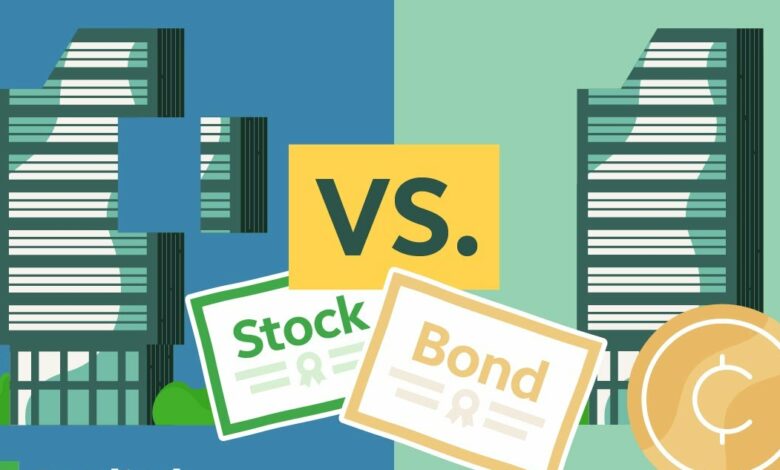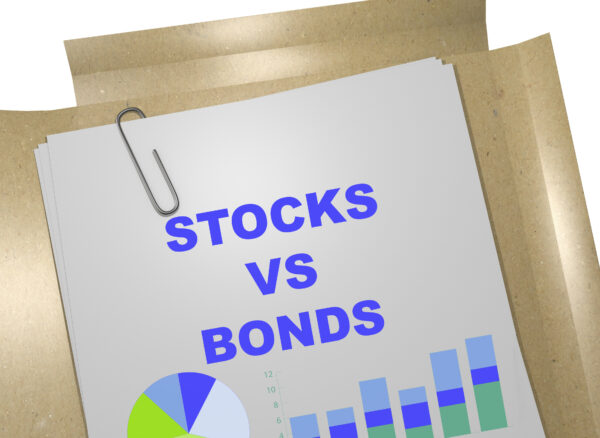
Which is the best investment for you: bonds or stocks?
The Most Important Investment Routes
All investments are motivated by the desire to profit; every investor wants to put their money to good use and earn a high return on investment. As a result, investors can choose to put their money into one or more of the investment options available (investment classes). Some of the most prevalent investment options are bonds, stock, cash equivalents, real estate, gold (and silver), various commodities, and so on.
They are considered the three main investment options among the several investment options (the three traditional investment classes). Alternative investment classes include all added investment options. Compared to alternative investment classes, the three main investment classes often offer many benefits to investors. As a result, many investors prefer to finance in the three major asset classes over the alternative asset classes.
Let us quickly review the benefits of investing in the three main investment classes against other investment classes. One of the most important benefits of investing in the major asset classes (especially for small investors) is that these classes can often be entered with minimal quantities of money.
Second, the three investment classes may often provide more investment alternatives than some alternative investment classes. The equity market, for example, may contain the equities of tens of thousands of companies. These thousands of companies offer equity investors the opportunity to finance in one or more of them. On the other hand, some commodities markets may have only a few hundred (or even fewer) investment alternatives. Investors in other alternative investment classes may have the same limited options.

Furthermore, the primary investment classes often provide investors with more liquidity and transparency than alternative investment classes. Bonds and stocks are commonly exchanged on well-organized and regulated exchanges, and these markets see many daily transactions since these investment classes are mainly known to investors. As a result, investors in these asset types may usually sell their assets and get their money back fast. On the contrary, if a real estate owner wants to sell it and get his money back, he may have to wait many months to find a buyer.
Similarly, the markets that deal with the three main investment classes update the prices of assets quite regularly (build on the different transactions in that market) (generally, many times per second). These markets also display the current prices continuously. As a result, investors may quickly (and accurately) determine the current price of assets traded on these exchanges.
Investors can make well-informed investing selections as a result of this. On the other hand, it may not always be possible to identify the price at which the most recent transaction in a specific location was completed in the real estate market. As a result, it may be difficult for a real estate investor to determine the market value of his property. As a result, such an investor may occasionally find himself selling his home for less than its market value (thereby losing potential profits).
These are the benefits that the primary investment classes (other) provide to investors. As a result of these benefits, many investors prefer to finance in the three main investment classes rather than the other investment classes, as stated above. Let’s look at bond and stock investments and see which is best for you.

Bonds and Stocks: A Guide to Investing in Bonds and Stocks
As we’ve seen, Bonds and stocks are two of the three basic investment classes. So let’s take a closer look at these two types of investments, and we’ll begin with bonds.
Bonds are lending instruments, which means that buying one is the same as lending money to the bond’s issuer. As a result, a bond buyer effectively becomes a lender to the bond issuer (who effectively becomes the borrower). Bonds can be used as fixed income instruments since the borrower (issuer of the bond) pays periodic interest to the lender (purchaser of the bond) in return for the funds borrowed. Each bond usually has a maturity date attached to it (effectively, the loan term). The borrower repays the initial sum at the end of the maturity period.
Bonds are highly adaptable; terms and conditions on different bonds might be drastically different. As a result, they provide a wide range of options, appealing to many investors. The maturity periods of several bonds, for example, can differ significantly. Many simple bonds have a short maturity time, as little as 2 to 3 years. Other bonds may have substantially longer maturities — many common bonds have maturities of up to 30 years. Bonds with more extended maturity periods have more good rates of return than bonds with shorter maturities.
Bonds are mostly seen as safer investments than stocks; for example, bonds are safer than stocks. Government bonds are considered to be almost risk-free.
Because bonds are regarded as safer investments than stocks, the rate of return on bonds is often expected to be lower than the rate of return on stocks. Some bonds may provide a very high return. Some bonds (for example, trash bonds) can provide up to 50% annual returns. The risk of default on these bonds usually is very high.
Before the end of the maturity period, some bonds may be sold in approved markets. Bond investors benefit from a lot of liquidity with these bonds because they can sell them in these markets at any time and get their money back. Selling a bond can give a second source of profit (profit). If a bond buyer sells it for a higher price than he paid for it, he profits from the transaction. These are some of the main characteristics of bonds. Let’s take a look at equity.
A bond is a loan instrument. Equity, on the other hand, is a form of ownership. When you buy a firm’s stock, you’re mainly buying a piece of the company — you’ve become a shareholder. Two types of income can be obtained from equity. To begin with, the price of a share may rise. When an equity investor sells his shares for a higher price than when he acquired them, he profits.

Second, profitable frequently organizations distribute dividends to shareholders. A dividend is a part of a company’s profits shared with its shareholders, and some companies pay dividends to their shareholders regularly. In such situations, the dividend can be used as a regular source of income (fixed income).
Equity is commonly a high-risk, high-reward investment, and equity investments are generally riskier than bonds. As a result, it is expected that equity investments will provide better rates of return than bonds or cash equivalents. As a result, most experts recommend that most investors dedicate at least some of their portfolios to equities to expect higher returns on that part of their portfolio.
Some Experts also suggest that stock investors have a long investment horizon (at least five years, ideally ten years or longer) to increase their assets’ chances of earning a standard return. Market swings may drive down the value of even solid stocks in the short run. However, good stocks are predicted to perform well and create good returns in the long run.
Bonds vs Stocks: How to Choose the Right Investment:
Now that you’ve learned the differences between bonds and stocks, you’re ready to know which is the best investment for you. To do so, you must first figure out your investment goals. Bonds and equities are two different types of investments. As a result, investors with financial goals may find a bond and stock investments appealing.
Let’s pretend an investor has a shorter investment horizon (say, less than five years). Equity investments are appropriate for people with a longer investing horizon. Varying bonds, on the other hand, have different maturity periods. As a result, investors with a wide range of investment horizons may locate bonds with maturities that correspond to their goals. Therefore, short-term bonds are suitable for investors with a shorter investment horizon (with maturity periods of about 2 to 3 years). This would be advantageous for risk-averse investors looking for safer investing options.
Some investors may have a short time horizon for investing and are willing to take on more risk. Like shares of companies in fast-rising industries, high-growth equities may be of interest to such investors. Even though such equities would be considered high-risk investments, they may give decent returns in the near run.

If you have a longer investment horizon and are risk-averse, long term bonds may be the best option for you. They invest in a stock if they are willing to take on more risk. In this situation (i.e. over the long run), the store is predicted to outperform bonds in terms of returns.
Another alternative for investors is to put their money into a well-balanced portfolio. This assures that a portion of the portfolio is placed in secure, liquid cash equivalents, another part in low-risk bonds, and the remaining amount in high-risk, high-return equity. Experts say investing 10% of the portfolio in cash equivalents, 20% in bonds, and 70% in equities for individuals with a long investment horizon and the ability to accept some risk. Similarly, experts often advise putting 40% of a portfolio in cash equivalents, 50% in bonds, and 10% in equities for individuals with a shorter investment horizon and lower risk tolerance. As a result, once you’ve determined your investment objectives, you may create the optimal portfolio to meet them.
You’ve now grasped the critical differences between bond and equity, and you’ve also known how to make your portfolio. As a result, you can make wise investment selections and lead your way to prosperity and success.
Good luck with your investments!
Edited and Proofread by Ashlyn Joy



